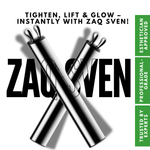
Muscle aches and pains plague everyone – some people more than others. Whether it’s due to exercise, illness or just a certain monthly visitor, soreness can change what began as a great day into a terrible one. Before you reach for a pain reliever made of chemicals, try aromatherapy. All natural and easy to use, essential oils provide relief of pain symptom while uplifting your mood. They make your day oh so much better!
Read on to discover why they work and how to select the right essential oil (or oils!) for your symptoms.
Why Essential Oils Work
Many different things cause aches and pains:
- Sports or exercise, including injury (strains and sprains), overexerted muscles and even overstretched muscles
- Inflammation from a strain or underlying illness
- Arthritis
- Rheumatism, which causes joint pain that, in turn, effects your muscles
- Bad posture (combine your treatment with yoga or Pilates to help strengthen your core and encourage good posture)
- Headaches and migraines
Essential oils are made from all natural ingredients have two main properties to manage pain symptoms: analgesic and anti-inflammatory. These properties are also found in over-the-counter pain relievers, so using essential oils instead will help you deal with the symptoms without having to ingest chemically manufactured ingredients.
Analgesic
Also known as “painkiller”, analgesic properties provide relief from pain by acting on the peripheral and central nervous system… essentially “fooling” your brain into believing there is no pain.
Try essential oils with these properties instead of over-the-counter acetaminophen-based pain relievers.
Anti-inflammatory
Reduces inflammation or swelling, which is sometimes all you need to reduce pain. These work best when combined with analgesics to help manage pain.
Try essential oils with these properties instead of over-the-counter ibuprofen-based pain relievers.
Note: if you suffer from a chronic illness, persistent pain, or are pregnant, consult your doctor before using essential oils. Remember – your doctor knows best!
Using Essential Oils
There are four ways to treat muscle aches and pain with aromatherapy:
#1 Massage
Combining the effects of essential oils with a long massage creates an environment that promotes relaxation and healing.
- Mix your essential oil of choice with your massage oil (10 drops of essential oil per 1 ounce of massage oil)
- Massage your mixture into the sore muscle.
#2 Soak
There’s nothing like a long, hot bath to release tension and ease your aches and pains, whether they’re muscular, joint or stress related.
- While the tub is filling, toss in 2-3 cups Epsom salt and 10 drops of your essential oil of choice.
- Optional: to ensure the essential oils really mix with the bath water, mix them with a carrier oil first.
- Sink into the tub and enjoy true bliss.
#3 Diffuse
If you don’t have time for a massage or a bath, diffusing the essential oils into your space is the easiest way to ensure you have all the benefits without infringing on your busy schedule.
- Fill and start the diffuser as per the manufacturer’s instructions (usually: fill water tank and add 5 – 7 drops of essential oil)
- Start the diffuser
- Go about your work while breathing in the lovely, pain relieving aromas
#4 Compress
You’ve heard of the healing effects of a hot or cold compress (hot to ease muscle tension, cold to reduce swelling). Now imagine the effects when you add essential oils!
- Boil or chill water and pour into a bowl
- Mix in 4 drops of your chosen essential oil
- Soak towel in the mixture
- Press to effected muscle or joint
- When the towel has reached room temperature again, repeat the above steps
Never apply concentrated essential oils directly to your skin. ALWAYS dilute them first. Also, stay hydrated and make sure to include the proper vitamins and minerals in your daily diet.
Best Essential Oils
Now that you know how to use the essential oils (and why they work), select the perfect essential oil for your symptoms from this list:
Chamomile (Roman & German)
The all-purpose essential oil, chamomile works on nearly every ache and pain. Why you ask? That is because it is both analgesic and anti-inflammatory as well as an antioxidant and antispasmodic.
Will help with muscle pain and spasms, arthritis, headaches, stress tension, PMS, digestive pain and more.
Clary Sage
Not to be confused with regular “Sage”, this is a particularly potent essential oil – it is mildly intoxicating and euphoric (so use in small doses). Clary sage has calming and soothing properties as well as an anti-inflammatory and antispasmodic.
Will help with muscle tension and spasms, and PMS. Used best when blended with chamomile.
Helichrysum
Multi-purpose though less potent than Chamomile, Helichrysum is anti-inflammatory, analgesic and antispasmodic.
Will help with arthritis, sciatica, bruises, tendonitis, tissue pain and detoxification.
Lavender
One of the only essential oils that can be applied undiluted to the skin. It is both an anti-inflammatory and a sedative (which will relax while it reduces swelling).
Will help with muscle tension, spasms, joint pain, headaches and tendinitis.
Peppermint
Soothing and cooling, the fragrant peppermint is the perfect pain-reliever. It is both anti-inflammatory and analgesic.
Will help with muscles and joint pain, headaches, arthritis, rheumatism and tendinitis.
Sweet Marjoram
Too much of this one could put you to sleep, so use in small doses (increase incrementally until you are pain-free but still awake). It is an analgesic as well as a powerful sedative.
Will help with tension, muscle pain, stiffness, rheumatism, arthritis, headaches and tendinitis.
Wintergreen
This lovely essential oils contains the same root component as aspirin – salicylate – and has cortisone-like properties. It is analgesic, anti-inflammatory and antispasmodic.
Will help with arthritis, rheumatism, tendinitis, muscle aches and pain.
SOURCES
The Top 16 Essential Oils to Relieve Pain and Inflammation
Natural Muscle Relaxer: Ease Occasional Muscle Spasm & Discomfort
Essential Oils 101: Using Essential Oils for Muscle-Related Pain Relief
Best Essential Oils for Pain, Discomfort, and Muscular and Joint Support
Essential Oils for Pain Relief



























































